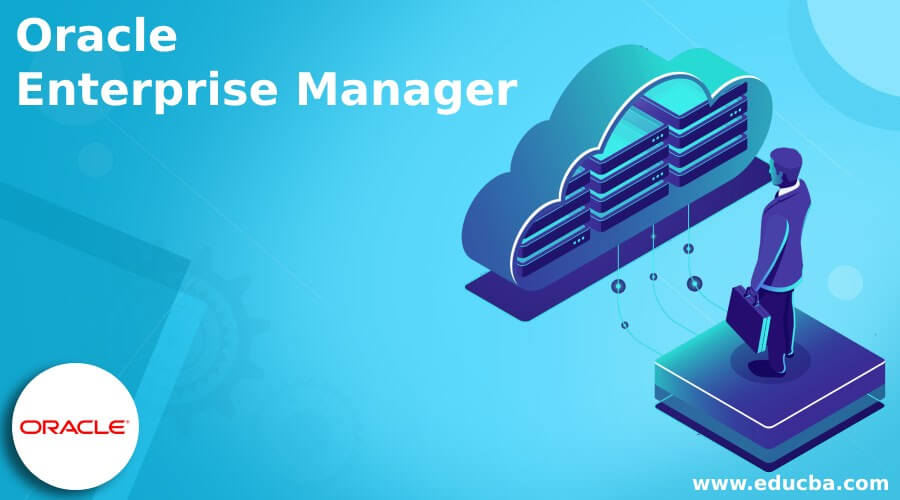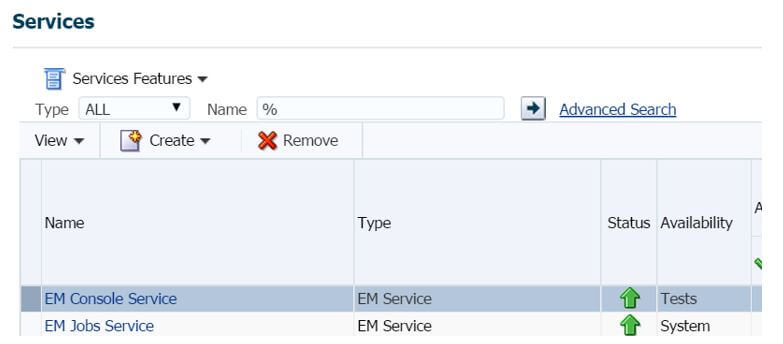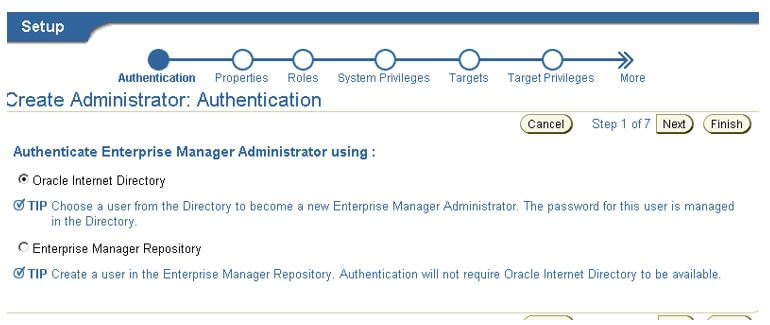Updated August 19, 2023
Introduction to Oracle Enterprise Manager
Oracle Enterprise Manager (OEM) includes management tools that allow DBAs and Application DBAs to observe and administer the whole Oracle IT environment, comprising applications and databases on the cloud and on-premise, from just a single console. OEM stands for Oracle’s product category for business information technology management. The OEM Packs are loaded and enabled by default as parts of the database construction application’s setup of the DB Enterprise Manager.
Overview of Oracle Enterprise Manager
Oracle Enterprise Manager is a system management application that offers a unified approach to controlling any hybrid environment. It provides an integrated, extensive network monitoring platform for managing Oracle products by combining a graphical interface, representatives, common services, and utilities. Oracle Management Agents are intelligent agents that help OEM control its operations. These agents communicate over the Hypertext Transfer Protocol and operate independently on a controlled node, performing processing and monitoring responsibilities for OEM (HTTP or HTTPS).
The Oracle Database includes Oracle Enterprise Manager. According to the agreement, its features should only be combined with Oracle Database Enterprise Edition. An Oracle Enterprise Manager device will send information to Oracle E-business Management. The signals are generated by Oracle Enterprise Manager’s Real-time Monitoring Compliance framework.
Oracle Enterprise Manager Services
Oracle Enterprise Manager solutions can help organizations centralize Oracle server management and inspection, streamline operations, check compliance with industry norms, and handle database life – cycles, among other things. The Oracle Enterprise Manager Installation Services will allow the deployment to be more agile, cost-effective, and risk-free. The Oracle Consulting approach is intended to deploy Enterprise Manager 12c Cloud Management using Oracle industry standards tailored for the scenario. It is included with the Oracle Database license and does not have to be purchased separately.
Enterprise Manager allows the creation of one or more services that reflect the company’s business operations or programs. These services are defined by writing one or even more tests that mimic specific service provisions. The Oracle Management Agent (OMA) enables numerous “Database Enterprise Edition Management Packs” by standard during the setup process. As a result, the user must deselect the undesirable types.
Amazon RDS supports Oracle Enterprise Manager Database Express for the supporting releases:
- 19c Oracle Database (non-CDB only)
- 12c Oracle Database
In the EM12c environment, the following activities are displayed by default:
- Service for EM Console
- Job Service EM
These two services are needed for Enterprise Manager tasks to be completed successfully. The EM Console Service keeps the interface active and available. In contrast, the EM Job Service manages not only the EM Jobs visible in the EM Task Status console and also a lot of Enterprise Manager background activity.
Depending on the needs, one can establish many sorts of service models.
We can develop the following types of service models:
- Generic Service: In Enterprise Manager, a Generic Service is a simple service model that can construct. We can build one or more service models by associating service assessments and relevant system targets that reflect a vital business function.
- Aggregate Service: An Aggregate Service is created by combining many services. Single services are known as sub-services inside the context of an Aggregate Service. An Aggregate Service can also be used to establish further Aggregate Services as a sub-service.
Oracle Enterprise Manager Benefits
The OEM manages enterprise-level programs, datasets, infrastructure, virtual environments, and cloud-based systems. Oracle’s Enterprise Manager also has a drag-and-drop user interface that makes it easy to use and needs little expertise or technical skills. It also allows for specific automation, such as periodic report generation, database backups, and problem identification and remediation, even in remote locations.
Let’s see a few benefits of OEM:
- The application’s usability is excellent, allowing for a single point of supervision for patch control across all implementations via this platform.
- It is easier for anyone to monitor and envision its availability and reliability.
- It helps manage all of our apps and databases from a single location. It comes pre-loaded with the best automation in monitoring and reporting templates. It also provides a graphical depiction of all the modules, which is quite helpful and enlightening regarding performance issues.
- Single point of management via a centralized console.
- Scalability in scattered, increasing contexts. Proactive event management and automated task management.
- An autonomous intelligent agent accomplishes duties even when a critical network component fails.
- Administrator-level security that is simple to utilize.
OEM Security
Administrator-level privacy is simple to use with Oracle Enterprise Manager. The security control system is adaptable enough to accommodate the system’s security responsibilities and rules. Host and application credentials can be saved across the network.
Oracle Enterprise Manager security aims to achieve the following objectives:
- Individuals with the appropriate privileges get access to sensitive monitoring and data collected.
- The goal is achieved by demanding login/password credentials and appropriate permission to obtain essential data before users access the Enterprise Manager interfaces.
- All data exchanged among Enterprise Manager components is encrypted. Therefore, all data collected by each Oracle Method can only be sent to the Oracle Management Service, whereby the Management Agent is set.
Security is one of the most pressing problems for all IT professionals. If a tool like OEM were subjected to a Denial-of-Service assault, the enterprise’s sophisticated database management capacity would be rendered useless.
- Disable insecure operations such as FTP, telnet, and rlogin.
- Lock UDP and TCP ports for disabled services. Control of access to the operating system.
- Limiting the capability for all these users to edit the -Oracle Management RepositoryRestricting the capability for all these users to change the default folder permission of Oracle Home.
- We are limiting the amount of OS users with permission on the Oracle Database host.
Conclusion
We have seen how Oracle Enterprise manager helps in the cloud world. It has been highly reviewed due to multiple device monitoring and is considered the right tool for the entire organization.
Recommended Articles
This is a guide to Oracle Enterprise Manager. Here we discuss the introduction, oracle enterprise manager services, benefits, and security. You may also have a look at the following articles to learn more –






